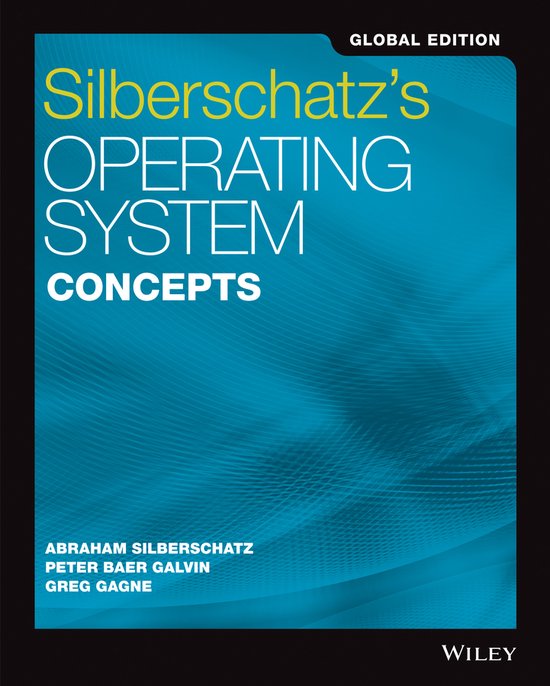Information security and cryptography computer security and the internet

Uiterlijk 30 november in huis
This book provides a concise yet comprehensive overview of computer and Internet security, suitable for a one-term introductory course for junior/senior undergrad or first-year graduate students.
Building on the core strengths of the inaugural book, this second edition of a uniquely accessible textbook provides a concise, yet comprehensive overview of computer and Internet security. It builds on the design principles to address security-related error patterns that have plagued software and system designs for more than 50 years.
Computer Security and the Internet is “elementary” in that it assumes no background in security, but unlike “soft” high-level texts it does not avoid low-level details. The book reinforces fundamental academic concepts with examples and also relates these concepts to practical challenges and real-world incidents. Its overriding focus is brevity, without sacrificing breadth of core topics or technical detail within them; it designates selected content as optional to help readers prioritize topics. While knowledge of elementary operating-system and networking concepts is helpful, review sections summarize the essential background.
Topics and features:
Delivers comprehensive, technically sound explanations without burdening readers with mathematical proofs or lengthy source-code examples (NEW) adds chapter on wireless LAN security (Wi-Fi and 802.11) (NEW) adds chapter on Bitcoin and Ethereum, blockchains and cryptocurrencies Integrates inline exercises and supplemental per-chapter references and endnotes, bridging to further topics and serving as a springboard to research literature Dives selectively into fine points for exemplary topics to concretely illustrate concepts and principles Provides pointers to key surveys and relevant standards, including from the Internet Engineering Task Force and the U.S. National Institute of Standards and TechnologyIdeal for a one- or two-term introductory course for junior/senior undergraduate or first-year graduate students, this textbook/reference is also suitable for self-study by anyone seeking a solid footing in security, including software developers and computing professionals, technical managers, and government staff.
Paul C. van Oorschot is a Professor of Computer Science at Carleton University (Ottawa), Canada Research Chair in Authentication and Computer Security, ACM Fellow, and IEEE Fellow. His earlier industrial career was in telecommunications and software security.
This book provides a concise yet comprehensive overview of computer and Internet security, suitable for a one-term introductory course for junior/senior undergrad or first-year graduate students. It is also suitable for self-study by anyone seeking a solid footing in security – including software developers and computing professionals, technical managers and government staff. An overriding focus is on brevity, without sacrificing breadth of core topics or technical detail within them. The aim is to enable a broad understanding in roughly 350 pages. Further prioritization is supported by designating as optional selected content within this. Fundamental academic concepts are reinforced by specifics and examples, and related to applied problems and real-world incidents.
The first chapter provides a gentle overview and 20 design principles for security. The ten chapters that follow provide a framework for understanding computer and Internet security. They regularly refer back to the principles, with supporting examples. These principles are the conceptual counterparts of security-related error patterns that have been recurring in software and system designs for over 50 years.The book is “elementary” in that it assumes no background in security, but unlike “soft” high-level texts it does not avoid low-level details, instead it selectively dives into fine points for exemplary topics to concretely illustrate concepts and principles. The book is rigorous in the sense of being technically sound, but avoids both mathematical proofs and lengthy source-code examples that typically make books inaccessible to general audiences. Knowledge of elementary operating system and networking concepts is helpful, but review sections summarize the essential background. For graduate students, inline exercises and supplemental references provided in per-chapter endnotes provide a bridge to further topics and a springboard to the research literature; for those in industry and government, pointers are provided to helpful surveys and relevant standards, e.g., documents from the Internet Engineering Task Force (IETF), and the U.S. National Institute of Standards and Technology.
- 1 Bekijk alle specificaties



Taal: en
Bindwijze: Hardcover
Oorspronkelijke releasedatum: 14 oktober 2021
Aantal pagina's: 446
Illustraties: Nee
Hoofdauteur: Paul C. Van Oorschot
Hoofduitgeverij: Springer Nature Switzerland AG
Editie: 2
Product breedte: 178 mm
Product lengte: 254 mm
Studieboek: Nee
Verpakking breedte: 178 mm
Verpakking hoogte: 254 mm
Verpakking lengte: 254 mm
Verpakkingsgewicht: 1085 g
EAN: 9783030834104